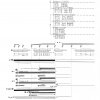Niobe
Niobe. Music to extracts from a poem by Konstanty Ildefons Gałczyński for two reciters, mixed choir and orchestra (1966)
Zofia Rysiówna, Tadeusz Łomnicki – reciters, National Philharmonic Orchestra and Chorus, cond. Stanisław Wisłocki, „Warsaw Autumn” 1966
{slider=Niobe. Music to extracts from a poem by Konstanty Ildefons Gałczyński . Recitativo /fragment/}
Zofia Rysiówna, Tadeusz Łomnicki – reciters, National Philharmonic Orchestra and Chorus, cond. Stanisław Wisłocki, „Warsaw Autumn” 1966
{/slider}
{slider=Niobe. Music to extracts from a poem by Konstanty Ildefons Gałczyński. Invocatione /fragment/}
Zofia Rysiówna, Tadeusz Łomnicki – reciters, National Philharmonic Orchestra and Chorus, cond. Stanisław Wisłocki, „Warsaw Autumn” 1966
{/slider}
{slider=Niobe. Music to extracts from a poem by Konstanty Ildefons Gałczyński. Lamento /fragment/}
Zofia Rysiówna, Tadeusz Łomnicki – reciters, National Philharmonic Orchestra and Chorus, cond. Stanisław Wisłocki, „Warsaw Autumn” 1966
{/slider}
{slider=Niobe. Music to extracts from a poem by Konstanty Ildefons Gałczyński. Antifona /fragment/}
Zofia Rysiówna, Tadeusz Łomnicki – reciters, National Philharmonic Orchestra and Chorus, cond. Stanisław Wisłocki, „Warsaw Autumn” 1966
{/slider}
The work was composed to a piece by Konstanty Ildefons Gałczyński written in 1960 and devoted to a marble bust of Niobe kept in the Nieborów palace. It is a poetic metaphor – the tragedy of Niobe grieving over the bodies of her children is a tragedy of thousands of mothers during WWII. Serocki selected just some fragments of the poem, which he “cut” and put together anew in order to create his own sonic and highly expressive vision of the poetry, fully respecting its content along the way.
It is Kazimierz Serocki’s first vocal-instrumental work since Eyes of the Air. Though for an entire decade the composer focused exclusively on instrumental music, throughout this time he was also looking for means thanks to which he could pursue his concepts on the vocal plane. His main objective was to achieve a balance between the independent sound and texture of his music and the verbal layer. Niobe, on the other hand, is an attempt to find a solution to this problem by introducing recited rather than sung parts. It is also characterised by a precise selection of orchestral parts.
The work consists of four sections: Recitaivo, Invocatione, Lamento and Antifona. The poetic text is recited in the first part by the choir, in the second by the male reciter, in the third – the female reciter and in the fourth – again by the male reciter. In each of these sections there emerges a different emotional climate (matching the climate of the poetry) achieved by precise changes of the timbre and by interactions of the instrumental parts with the spoken word. The first part is a sombre and brief summary of Niobe’s tragedy. Part two introduces a more cheerful, brighter mood, praising the main protagonist. The third part is the climax of the work. It is heartbreaking, because the text touches upon Niobe’s extreme anguish – bordering on madness – after the loss of her children. The finale is a solemn hymn celebrating Niobe.
The role of the choral part is to support the listeners’ understanding of the text and the entire work can be interpreted as an attempt to integrate poetry and music in the spirit of melodrama, a genre that was, in a way, restored to the history of music in the 20th century by Arnold Schoenberg. However, Serocki’s “melodrama” is a wholly original vision, both when it comes to its overall dramatic concept and its sound, which is built to a large extent on the basis of murmuring elements.
{slider=Sources:}
- Tadeusz A. Zieliński,O twórczości Kazimierza Serockiego [On Kazimierz Serocki’s Oeuvre], Kraków 1985.
{/slider}





